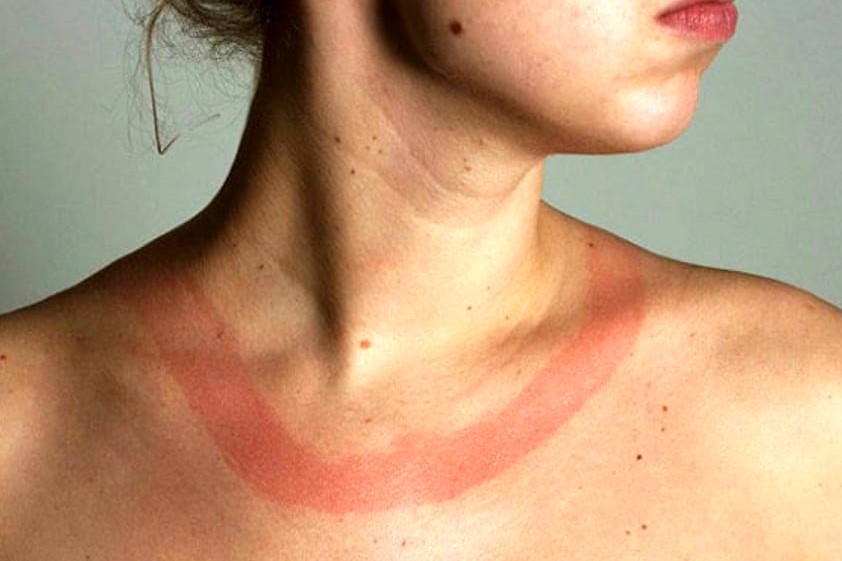
Nickel allergy: what objects and foods to avoid?
Symptoms of nickel allergy: nickel is an almost ubiquitous heavy metal because it is present, albeit to varying degrees, in so many everyday objects and common foods
Nickel allergy and intolerance are increasingly common reactions and can occur in the skin but not only
In particular, nickel allergy is the most common cause of Allergic Contact Dermatitis (ACD), a type of reaction due to hyperactivity of the skin that produces skin inflammation and manifests as eczema-like lesions: itching, redness, swelling, burning, scaly lesions and blisters.
In some cases, serum loss leading to the formation of scabs.
Usually dermatitis appears between 12 and 48 hours after exposure to nickel and may persist for several days.
In contact allergy, only those parts of the body exposed to the allergen are affected: the areas most affected by nickel allergy are the hands and face but dermatitis may appear in other areas as well.
Systemic nickel allergy syndrome (SNAS), on the other hand, manifests with cutaneous manifestations (so-called Systemic Contact Dermatitis or SDC) extracutaneous (gastrointestinal, respiratory, neurological etc.).
Classic gastrointestinal symptoms are vomiting, diarrhea, abdominal pain, abdominal bloating and tension, constipation, and heartburn.
Cases of rhinitis and asthma from occupational exposure may also occur.
Food allergy to nickel: what foods to avoid?
According to the Ministry of Health website, foods are the main source of exposure to toxic elements of mainly environmental origin: these include nickel in addition to lead, cadmium, mercury, chromium and arsenic.
Some allergies can affect food: these are the so-called cross-allergies that trigger allergic reactions in different sources including food.
It is for this reason that undergoing specific tests helps to fine-tune a balanced diet that allows the allergic person not to deprive himself or herself of foods important for the body’s needs but to feed himself or herself appropriately.
But which foods have the highest nickel content and which foods should be avoided in case of nickel allergy?
Complete elimination of nickel is not possible or even useful, and therefore a diet low in this metal should rather be considered.
There is no unambiguous information in the medical literature regarding which foods are actually allowed and which are to be avoided.
Some diets are highly variable: in some cases exclusion is limited to foods that are more or less unanimously believed to be high in nickel, but in other cases diets also involve foods with lower nickel content.
As reported in a paper published on the website of the Italian Society of Pediatric Allergology and Immunology, green leafy vegetables, potatoes, carrots, broccoli, onion, garlic, mushrooms, tea, coffee, beer, and wine in some dietary patterns are banned, in others allowed.
Apricot, cited as a high-nickel food is, on the other hand, never banned while bananas, oranges, and pineapple, while not included in the lists of high-nickel foods, are banned in some diets.
Contradictory is also the opinion towards fish: according to some authors fresh fish is never prohibited, according to others tuna, mackerel, salmon and herring should be avoided.
In general, canned fish is prohibited because of the risk of nickel release from the container.
Also on the risk of nickel release from cookware and containers commonly used in cooking, there is no unanimity of opinion.
Most of the nickel taken in with food is not absorbed but remains in the gastrointestinal tract.
Absorption, which varies between 1 and 10 percent, depends on a number of factors including, for example, the intake of vitamin C and iron, which reduce the absorption of dietary nickel.
Diagnosis of nickel sensitization
The diagnosis of nickel sensitization is made by patch-test, the specific test for Atopic Contact Dermatitis that mimics the mode of the patient’s exposure to the metal, namely skin contact.
It should be noted that patch-test expresses only a sensitization condition but not necessarily sensitization means allergy.
Treatments in case of nickel allergy
There are no definitive treatments to eliminate nickel allergy but the symptoms of contact dermatitis can be reduced.
Your doctor may prescribe:
- oral or systemic corticosteroids
- soothing creams
“Nickel-free” products
What does the “nickel free” statement on labels of products intended for skin contact mean?
In a document published on the website of the Ministry of Health, it says that the “nickel free” indication on products such as, for example, earrings, necklaces and bracelets, includes a regulatory obligation on the part of importers and manufacturers to demonstrate, through analyses produced by accredited laboratories, that in such items the rate of nickel release is less than 0.2 micrograms per square cm/week for items that are inserted into pierced parts of the body (e.g., earrings); this limit rises to 0.5 micrograms per square cm/week if they are necklaces, bracelets etc.
Read Also
Emergency Live Even More…Live: Download The New Free App Of Your Newspaper For IOS And Android
Food Allergies: Causes And Symptoms
Adverse Drug Reactions: What They Are And How To Manage Adverse Effects
Symptoms And Remedies Of Allergic Rhinitis
Allergic Conjunctivitis: Causes, Symptoms And Prevention
What Is And How To Read The Allergy Patch Test
Allergies: New Drugs And Personalised Treatment
Allergic Contact Dermatitis And Atopic Dermatitis: The Differences
Spring Arrives, Allergies Return: Tests For Diagnosis And Treatment
Symptoms And Foods To Avoid With Nickel Allergy
Contact Dermatitis: Can A Nickel Allergy Be The Cause?


